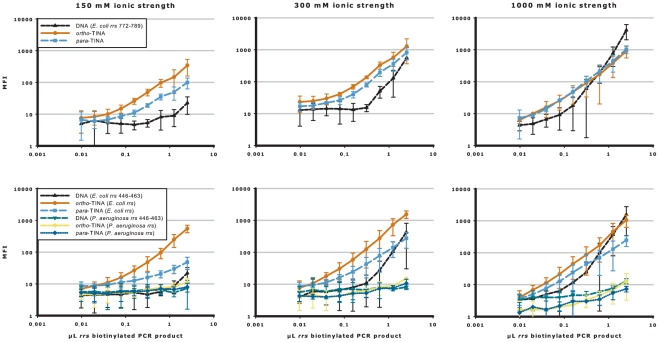Figure 3. TINA modified oligonucleotides increase the analytical sensitivity in buffer of increasing ionic strength.
Competitive annealing of ortho- or para-TINA terminally modified oligonucleotides, compared with unmodified DNA oligonucleotide, to denatured PCR products in buffer of increasing ionic strength. E. coli rrs biotinylated PCR product was captured by unmodified DNA oligonucleotide (▴) and ortho-TINA (•) or para-TINA (▪) modified oligonucleotides targeting E. coli rrs base pairs 772–789 and 446–463, with unmodified DNA oligonucleotide (▾), ortho-TINA ( ) or para-TINA (⧫) modified oligonucleotides targeting P. aeruginosa base pairs 446–463 as cross-reactivity control. In experiments targeting base pairs 446–463, a conventional DNA helper oligonucleotide (base pair target 464–483) was included. Experiments were performed in phosphate buffer, pH 7.0, with 0.03% Triton X-100 and increasing ionic strength (100–1,000 mM) at 52°C. Data are presented as mean raw MFI with 95% confidence intervals. Full data are shown in Figure S1.
) or para-TINA (⧫) modified oligonucleotides targeting P. aeruginosa base pairs 446–463 as cross-reactivity control. In experiments targeting base pairs 446–463, a conventional DNA helper oligonucleotide (base pair target 464–483) was included. Experiments were performed in phosphate buffer, pH 7.0, with 0.03% Triton X-100 and increasing ionic strength (100–1,000 mM) at 52°C. Data are presented as mean raw MFI with 95% confidence intervals. Full data are shown in Figure S1.

